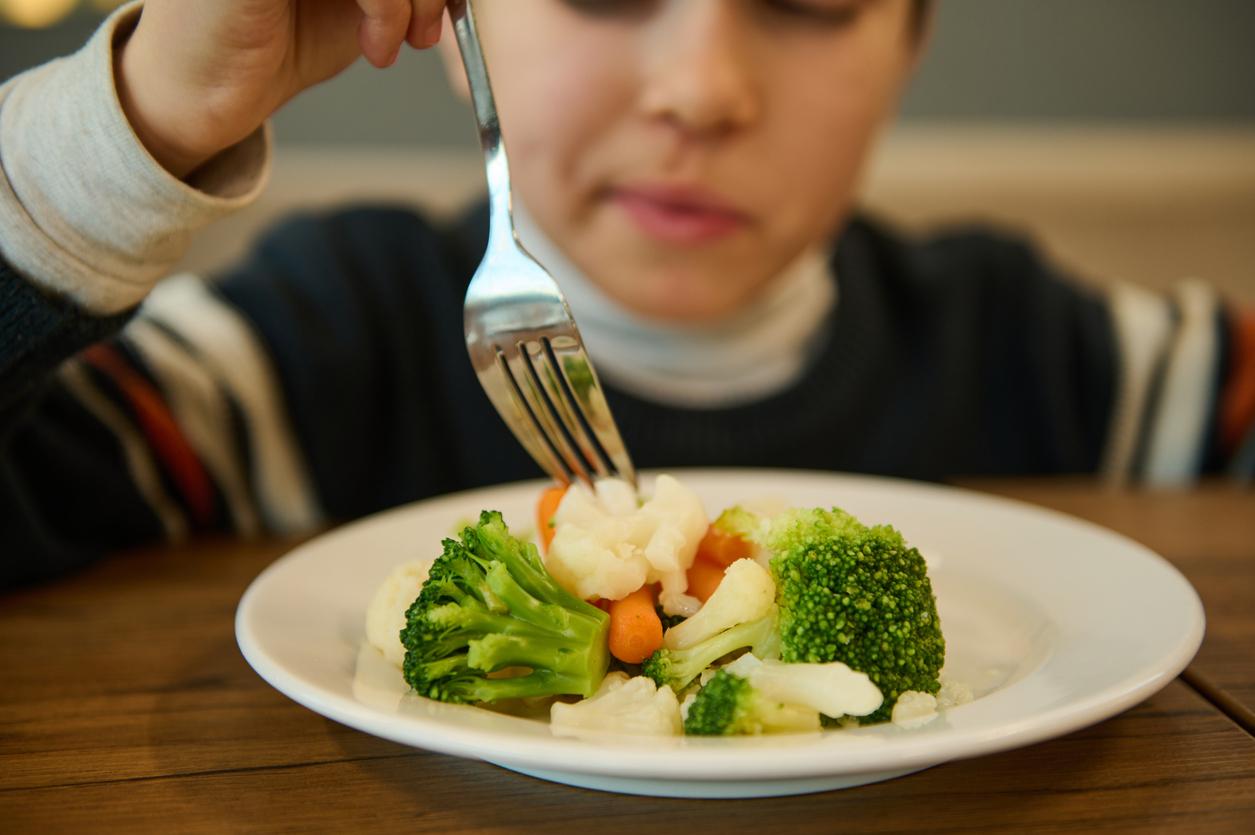To encourage your children to eat more fruits and vegetables, make family meals longer.

- By extending the duration of the meal by ten minutes, the children consumed about 100 grams more fruit and vegetables.
- For this trick to work, it is necessary that the “fruits and vegetables are available in sufficient quantity on the table” and cut into small pieces.
- Longer meals did not lead young people to eat more bread, cold meats or desserts.
Want your kids to eat more fruits and vegetables? Take more time to eat. This is the trick revealed by researchers at the University of Mannheim (Germany). In a recent study, they showed that the increase in the duration of family meals was linked to the consumption of fruits and vegetables by young people.
To reach this conclusion, the scientists recruited 50 pairs of parents and 50 children, aged 6 to 11, who did not suffer from food allergies. The young participants were served a typical German dinner consisting of sliced bread, cold cuts and cheese, as well as fruit and vegetables, cut into small pieces. “Under normal conditions, each volunteer ate in the same amount of time they reported for their usual meal. Under longer conditions, they had 50% more time to eat compared to the declared duration of his usual meal, can we read in the works.
Children eat more vegetables when they stay ten minutes longer at the table
According to the results, published in the journal JAMA Network Open, children ate significantly more fruit and vegetables if they remained at the table ten minutes longer than usual, or 30 minutes at the table in total. On average, they ate about 100 grams more fruit and vegetables. This represents approximately one of the five recommended daily servings of fruits and vegetables, the equivalent of a small apple or a small pepper. “The length of the meal is one of the central elements of the family meal that parents can vary to improve the diet of their children”, said Ralph Hertwig, author of the research, in a statement.
A longer meal encourages children not to consume more sugary or fatty foods
According to the authors, longer family meals did not lead children to eat more bread or cold meats, nor did they eat more desserts. The researchers assume that the pieces of fruit and vegetables “bite-sized” were easier to eat and therefore more appealing. “This finding has public health significance, as an additional daily serving of fruits and vegetables reduces the risk of cardiometabolic disease by 6-7%. To achieve such an effect, fruits and vegetables must be available in sufficient quantities. on the table”explained Jutta Mata, co-author of the study.
















